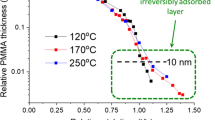Abstract
A cleaning process using anhydrous HF (AHF)/methanol and ozone was carried out in a STEAG AST Vapor Phase Cleaning module (VPC). This module was integrated in a state-of-theart cluster tool also consisting of a STEAG AST Rapid Thermal Oxidation module (RTO). To investigate the properties of silicon after cleaning a novel in-line XPS module was integrated into the gate oxide cluster. Measurements of fluorine, carbon, and oxygen contamination in the range from 0.01 to 1 monolayers on cleaned wafer surfaces and on regrown oxides (< 0.5 nm) have been performed and used for rapid optimization of the cleaning procedure. The in-line integration enabled measurements without exposing the wafers to atmosphere thus avoiding oxidation or contamination of the wafer surfaces. To demonstrate the feasibility of this cluster tool for advanced gate dielectric formation, 4.0 nm thin oxide was grown directly after the cleaning in the RTO module without breaking the vacuum. Time dependent dielectric breakdown results for oxides pre-oxidation-cleaned in AHF, and in AHF followed by ozone were compared to a reference sample without any dry pre-oxidation cleaning. It could be shown, that the cleaning in AHF with a subsequent ozone step at 200°C under UV light lead to improved breakdown characteristics compared to AHF/methanol cleanings without such subsequent ozone/UV step or conventional wet cleaning using HF-Dip.
Similar content being viewed by others
References
G. G. Barna et al., "Sensors needs for IC manufacturing", Solid State Technology, vol.37, no. 4, pp.57–61, 1994.
The National Technology Roadmap for Semiconductors, SIA, 1994, p. 123.
Cleaning and Contaminati9on Monitoring Systems for the Semiconductor Industry, VLSI Research, Inc. San Jose, CA, April 1986.
J. Ruzyllo,,, Microcontamination, Vol.6(3), 39 (1988).
P. Singer, "The Driving Forces in Cluster Tool Development", Semiconductor International, Vol.18, No. 8, 113, (1995).
C. Schneider et al. in Proc. of Fifth Int. Symp. on Semiconductor Manufacturing, Tokyo, Japan, pp.54–57, (1996).
SEMI Standards E 20, E21 and E22, Semi Book of Standards, Mountain View, (1995).
J. Ruzyllo, K. Torek, C. Daffron, R. Grant, and R. Novak, J. Electrochem.Soc., Vol 140, No 4, L64 (1993).
K. Torek, J. Ruzyllo, R. Grant, R. Novak, J. Electrochem. Soc., Vol 142, No 4, 1322 (1995).
C. S. Lee, J. T. Baek, H. J. Yoo, and S. I. Woo, J. Electrochem. Soc., Vol 143, No 3, 1099 (1996).
C. D. Wagner, W. M. Riggs, L. E. Davis, J. F. Moulder, G. E. Muilenberg, Handbook of X-ray Photoelectron Spectroscopy, Perker-Elmer Corporation (1979).
Barbara Froeschle, Lutz Deutschmann, Anton Bauer, Edmund Burte, to be published in Volume 470 of the Materials Research Society Symposium Proceedings Series (1997).
Acknowledgments
The authors would like to thank Silke Paul, Rainer Schoenweis, and Matthias Beichele for assistance in preparing the samples and performing the contact angle measurements.
Author information
Authors and Affiliations
Rights and permissions
About this article
Cite this article
Froeschle, B., Glowacki, F., Bauer, A.J. et al. Cleaning Process Optimization in a Gate Oxide Cluster Tool Using an in-Line XPS Module. MRS Online Proceedings Library 477, 371–377 (1997). https://doi.org/10.1557/PROC-477-371
Published:
Issue Date:
DOI: https://doi.org/10.1557/PROC-477-371



